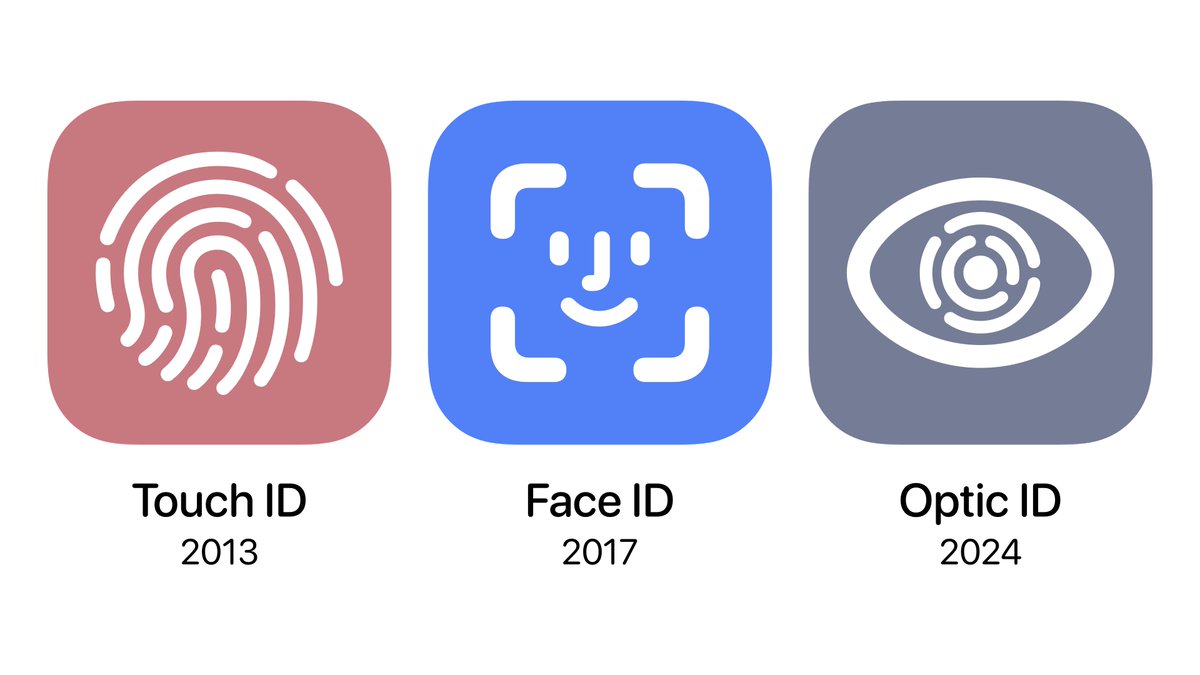Apple Optic ID security

Apple has a habit of showing new technology and not always new technology that appeals to everyone's tastes immediately. It divides watering but tends to be accepted as standard after some time. The company decided to cut the cord with the iPhone 7 and introduced the wireless earbud segment to compensate. We also saw the big cut out make its entrance on the iPhone screen a few years later.

Apple then decided to ditch touch ID in favor of Face ID. And now the company is once again rewriting the approach to that part of their products with the new Optic ID technology for its Vision Pro headset. Before you get any ideas, Apple isn't replacing Face ID with the new technology, and it looks like the new security feature is only going to be used in the headset category for quite a while yet.

So what is Optic ID, how does it work and what else do you need to know?
"In the same way that Touch ID revolutionized authentication with a fingerprint and Face ID revolutionized authentication with facial recognition, Optic ID is revolutionizing authentication with iris recognition," Apple said in its post about Optic ID. As the name suggests, Optic ID is about iris scanning, which is completely different from your face, which is scanned via Face ID. Iris scanning is not a new concept and it has also long been a favorite in film and TV.

Apple claims that Optic ID is able to authenticate the unique IDs of your iris, allowing for quick unlocking of the Vision Pro headset. Optic ID is also there to securely help you make payments via Apple Pay, log into third-party apps and hide personal data behind a layer of security. All the apps that used Face ID and Touch ID on other Apple devices will be compatible with Optic ID from day one.
Now that you know what Optic ID is, it's time to understand the technology that makes it possible. The feature scans both eyes for the unique iris signature and updates the data based on the details provided for each successful authentication. The technology uses advanced hardware and software to help recognize your iris. In simple words, Apple has equipped the headset with a high-tracking system of LEDs and infrared cameras.

Apple says the cameras and LED illuminate the eye to help the Vision Pro headset recognize the iris for authentication. "This iris image data is sent to and processed on the Secure Enclave and part of the Apple M2 chip's neural engine protected inside the Secure Enclave, where it is converted into a mathematical representation for enrollment. When you authenticate with Optic ID, the authentication attempt uses it same process to compare your iris with the enrolled biometric data to determine if there is a match," Apple explains the technology behind the feature. And yes, Apple assures that all biometric data is encrypted and the company does not back it up to iCloud or elsewhere.
Since the technology currently requires a camera very close to the eye in order to work, it doesn't look like we should expect it to find its way into much else than the headset category. Here, face recognition is simply more practical and cost effective.
Latest smartphone
-
18 Febsmartphone
-
07 Jansmartphone
OnePlus 13
-
03 Decsmartphone
OnePlus 13 will launch globally in January 2025
-
25 Octsmartphone
OnePlus launches OxygenOS 15
-
17 Octsmartphone
OxygenOS 15 goes live on October 24
-
20 Sepsmartphone
Apple can be forced to open Siri
-
10 Sepsmartphone
A18 Pro chip in iPhone 16 Pro is 15 percent faster
-
10 Sepsmartphone
Apple's event brought lots of news.
Most read smartphone
Latest smartphone
-
18 Febsmartphone
OnePlus Watch 3 now hits stores
-
07 Jansmartphone
OnePlus 13
-
03 Decsmartphone
OnePlus 13 will launch globally in January 2025
-
25 Octsmartphone
OnePlus launches OxygenOS 15
-
17 Octsmartphone
OxygenOS 15 goes live on October 24
-
20 Sepsmartphone
Apple can be forced to open Siri
-
10 Sepsmartphone
A18 Pro chip in iPhone 16 Pro is 15 percent faster
-
10 Sepsmartphone
Apple's event brought lots of news.






